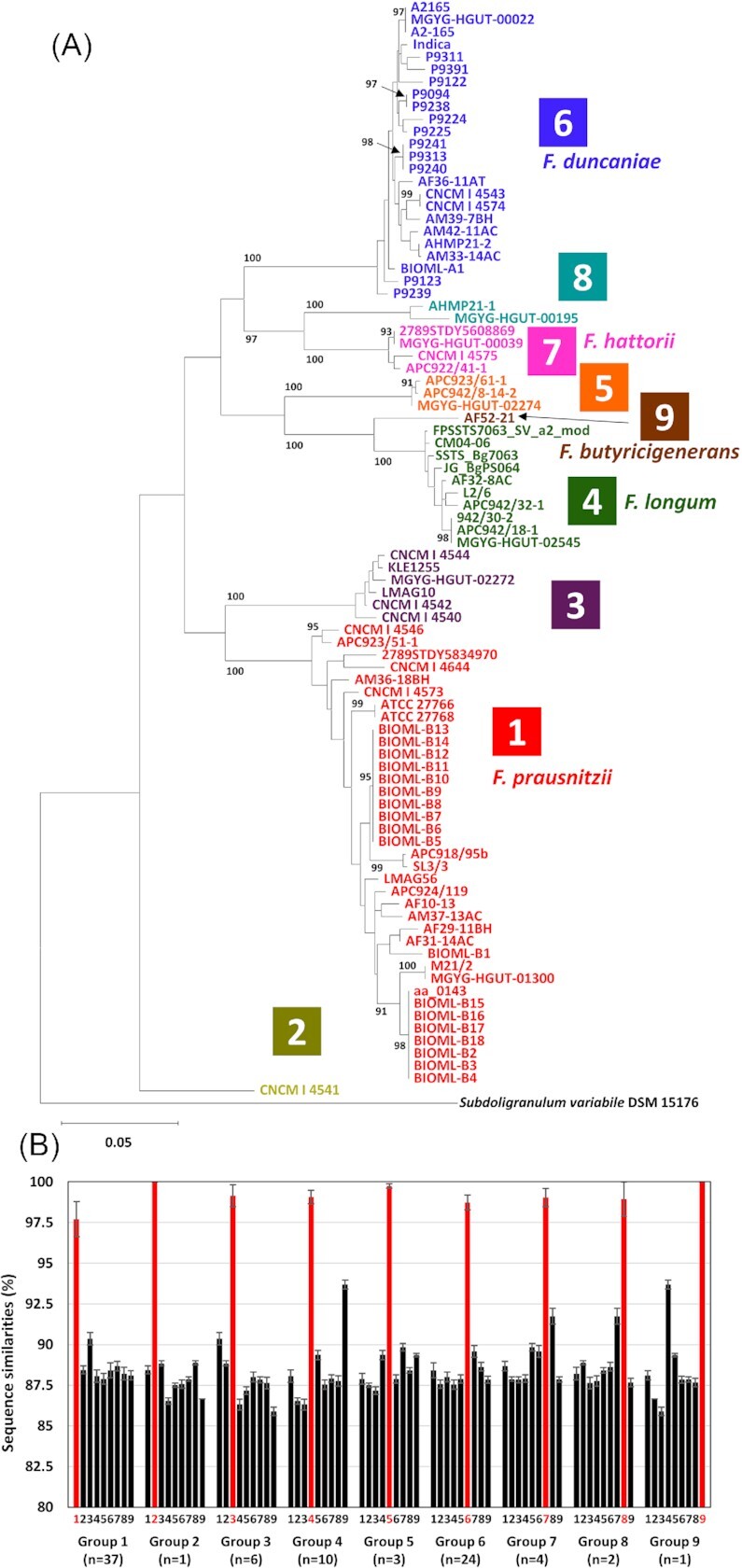Figure 1.

Phylogenetic tree based on recA gene nucleotide sequences of 88 strains of Faecalibacterium spp. (A) and intra- (red bars) and inter- (black bars) group recA gene sequence similarities (B). The maximum-likelihood tree was constructed using the best-fit evolutionary model. The values on the branches are bootstrap support from 1000 rapid bootstrapping replicates and only values higher than 90% are indicated. Subdoligranulum variabile DSM 15176 (GCA_000157955.1) was used as an outgroup. The scale bar means substitution per site. Groups based on ANI-values (Figure S1, Supporting Information) are indicated in different colours, and Groups 1, 4, 6, 7, and 9 are F. prausnitzii sensu stricto, F. longum, F. duncaniae, F. hattorii, and F. butyricigenerans, respectively. In (B), bars numbered 1–9 indicate the medians of sequence similarities to Groups 1–9, respectively, and error bars indicate SD. The numbers of strains in each group are indicated.
